Why Are My Speakers Making a Static Noise? 5 Ways to Fix It
Many people experience this issue and often ask, “Why are my speakers making a static noise?” The static noise coming from speakers is often caused by electrical signals coursing through the cables. Confirm and make sure that the speaker wires are properly connected to both the speakers and the audio device.
Have you ever been in the middle of a riveting movie scene or a much-awaited song release, only to be interrupted by the dreadful crackling and popping noises coming from your speakers?
In this blog post, we will explore the various causes of static sounds in speakers and provide a comprehensive guide on how to resolve this issue and optimize your audio setup for clarity.
With a better understanding of the causes behind static sound, you can take the necessary steps to enhance your listening experience and prevent any further interference. So, let’s dive in and discover how you can transform your audio system into a static-free haven.
Understanding the Causes That Can Lead To Static Noise
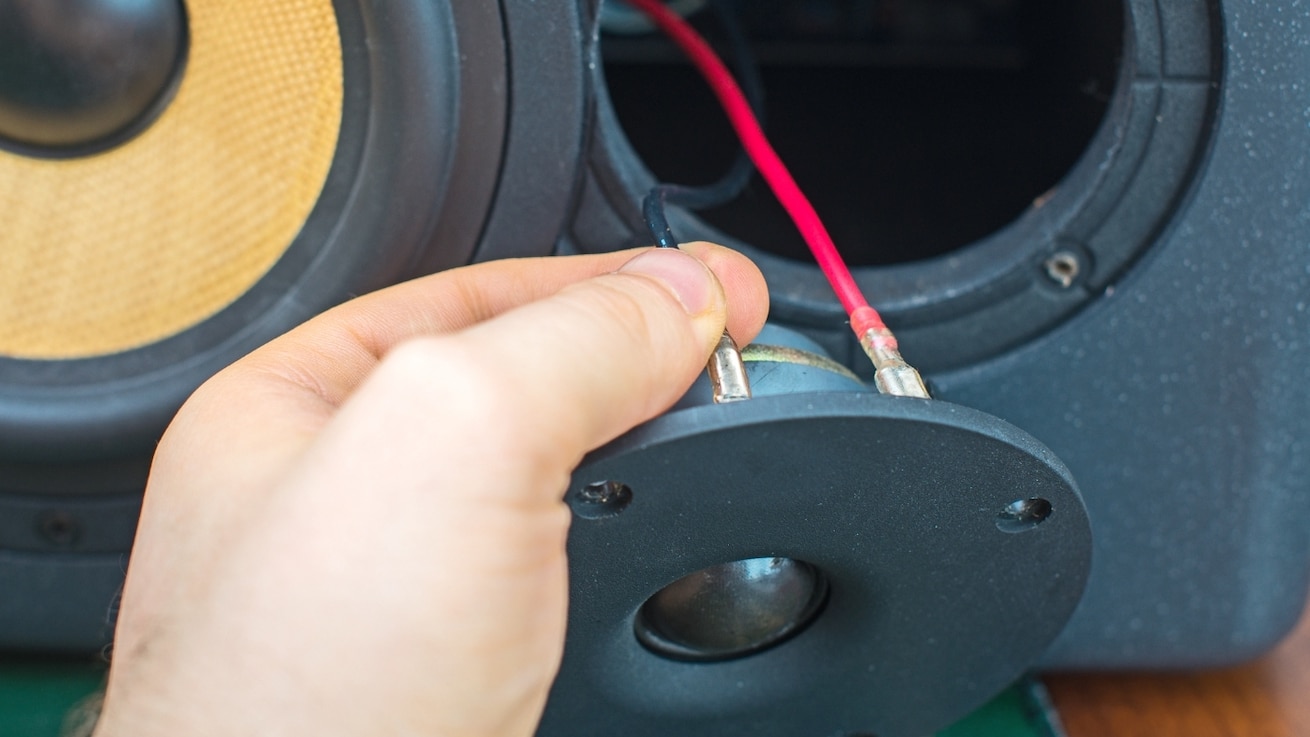
The first step in addressing static noise in your speakers is understanding its root causes. Generally, static sound stems from three primary sources: loose or damaged connections, damaged speaker components, and interference issues.
By identifying the specific cause of the static noise, you can take the appropriate actions to eliminate it and enhance the audio quality of your audio system.
We will further expound on each of these causes in the subsequent sections, elucidating their contribution to static noise and static noises and offering remedies to help you eradicate these disturbances from your speakers.
Loose or Damaged Connections
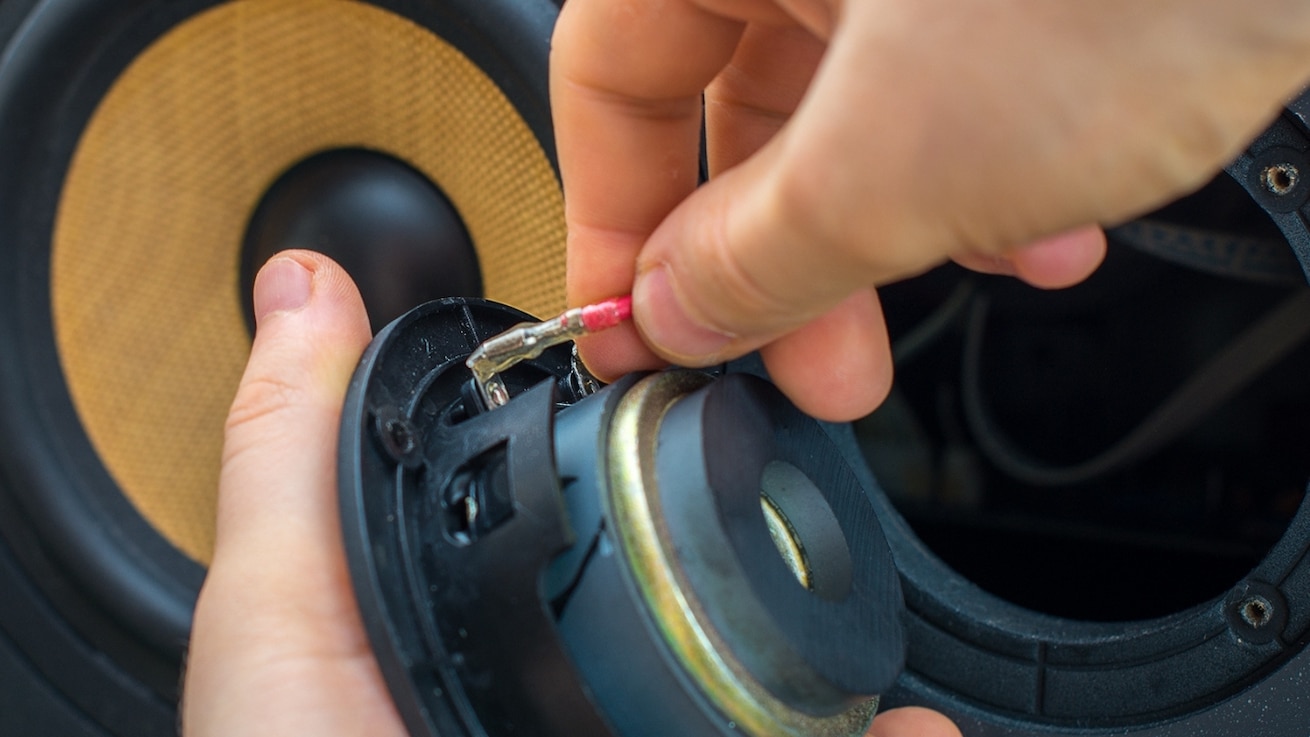
Loose or damaged connections are the most common cause of static noise in speakers. When audio cables or connectors are not properly secured, they can cause short circuits or interruptions in the signal flow, resulting in an annoying crackling or popping sound.
To avoid this, make sure all cable connections are tightly secured and correctly connected. Begin by examining each cable and connector if you believe they might be the source of the static noise in your speakers.
Look for any visible damage, such as exposed speaker wires or damage to the shielding, and check for a secure fit when connecting an audio cable to a plug. If you find any issues, don’t hesitate to replace the damaged cables or connectors. Taking this simple step can make a significant difference in the audio quality of your speakers.
Damaged Speaker Components
Another potential cause of static noise in speakers is damaged speaker components, such as broken voice coils or poor soldering. These issues can disrupt the flow of electrical current through the speaker’s magnetic field, causing irregular vibrations in the speaker cone and resulting in static hiss noise instead of clear sound.
To identify visible damage to speaker components, conduct a visual inspection of the speaker, looking for any signs of physical damage, such as tears, holes, or other visible abnormalities on the speaker cone or surrounding components.
You may need to remove the speaker grille or cover to get a closer look at the components. If you find any damage, consider seeking professional help for repair or replacement, but only attempt repairs if you are confident in your abilities.
Interference Issues
Interference issues can also lead to static sound in speakers, with hissing and humming noises often resulting from electromagnetic interference (EMI) or issues with cables and speaker wires. EMI can be caused by nearby electronic devices, power lines, or radio frequency signals.
To minimize the impact of EMI, proper shielding and grounding techniques should be implemented. If you suspect that interference may be causing static noise in your speakers, try moving potential sources of interference, such as cell phones or other electronic devices, away from your speakers.
Additionally, consider using ferrite noise suppressor sleeves or power conditioners to reduce interference and improve the overall quality of your audio device.
Troubleshooting Steps to Eliminate Static Noise
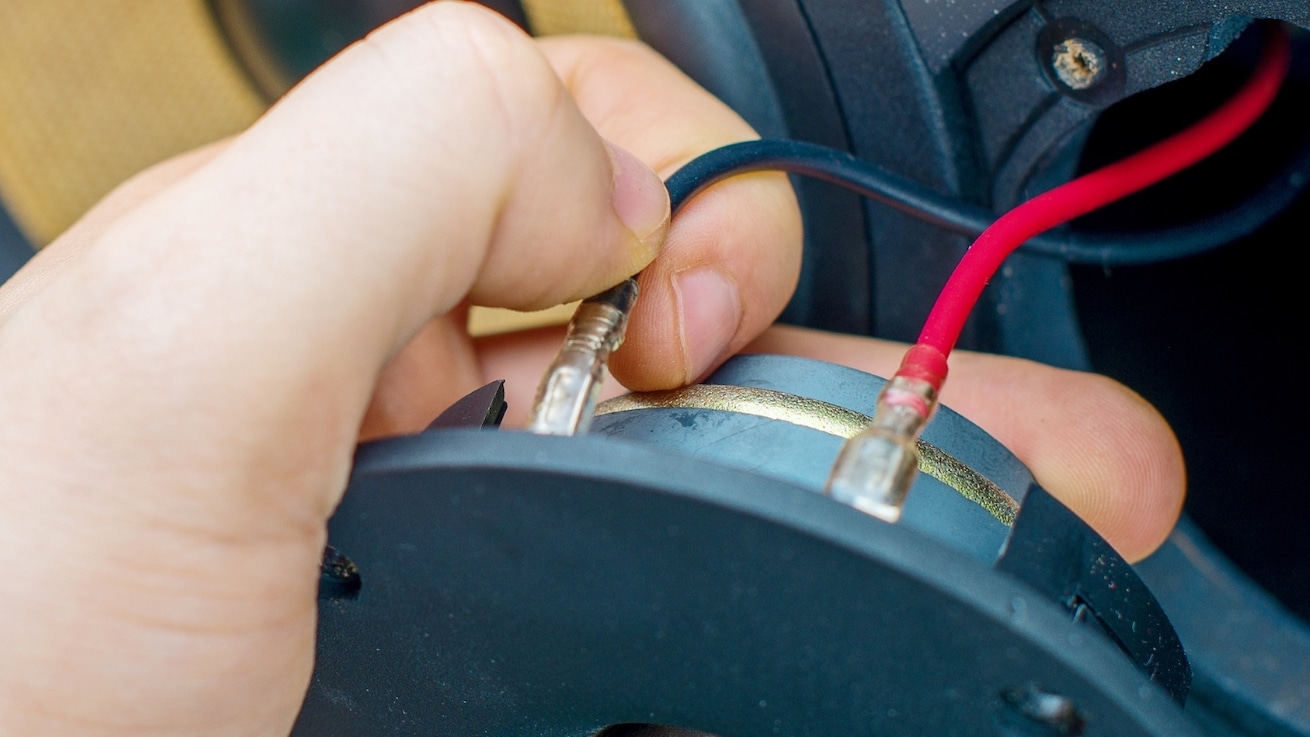
Armed with knowledge about the causes behind static noise in speakers, it’s time to delve into the troubleshooting steps that can help get rid of it from your audio device. By following a step-by-step process, you can identify the specific issue causing a hissing noise and take the appropriate measures to resolve it.
In the subsequent sections, we’ll walk you through the troubleshooting steps tailored to each of the previously mentioned causes. These include inspecting audio sources, scrutinizing cables and connections, and resolving ground loop problems.
Inspect Audio Source Quality
The quality of your audio source significantly influences the overall sound output of your speakers through the audio channel. Thus, confirming that the audio source material is of high quality and devoid of distortion or noise, often mistaken for technical issues, is important.
To identify distortion or noise in your audio source, listen for artifacts, visualize waveforms, and analyze the audio spectrum. If you find any issues with the audio source, consider replacing it with a higher-quality format, such as uncompressed or lossless files like WAV, FLAC, or M4A.
Examine Cables and Connections
As mentioned earlier, loose or damaged cables and connections are a common cause of static noise in speakers. To address this issue, start by examining all cables and connections for damaged or loose connections.
Immediately replace any damaged cables or connections you find to fix static. This can prevent further static sound and potential harm to your audio device. Additionally, ensure that all connections are secure and properly tightened to avoid any short circuits or interruptions in the signal flow.
Address Ground Loop Problems
Ground loop problems are a primary cause of static noise and ground loop hum in audio systems. These issues occur when there is a variance in the electrical potential at the grounding points, resulting in unwanted audio noise and interference.
To address ground loop problems, try connecting all devices to the same AC outlet using a power strip or hum eliminator. This will help to eliminate most ground loops and reduce the potential for ground loop interference.
Additionally, avoid using multiple outlets in a signal path, as this can create unwanted voltage differences and exacerbate ground loop issues. Ensuring a consistent power supply to all devices can also aid in mitigating these problems.
Manage Electromagnetic Interference (EMI)
Lastly, managing electrical interference is crucial for reducing any hissing sound in speakers. As previously mentioned, EMI can be caused by nearby electronic devices, power lines, or radio frequency signals, which may disrupt the proper transmission of electrical signals.
To manage EMI, keep your speakers away from other electronic devices, use shielding options such as ferrite noise suppressor sleeves, and invest in power conditioners. These measures will help to reduce interference and improve the overall audio quality of your audio device.
Poor connection or damaged wires
Poor grounding or broken wires are indeed a common cause of static noise in speakers. This issue stems from the fact that speakers, like all electronic devices, rely on a stable electrical current to function properly.
When the grounding of the speaker system is inadequate, it can lead to a phenomenon known as a “ground loop.” This is a condition in which there is an unintended path to the ground, creating an electrical loop that can cause a humming or buzzing noise.
Ground loops are usually the result of multiple devices being connected to the same grounding point, each with its own path to the ground. This can lead to differences in potential, or voltage, between these paths, creating an unwanted current flow that manifests as static noise.
Broken speaker wires, on the other hand, can cause interruptions in the signal flow. This can be due to physical damage, such as cuts or fraying, or due to internal damage, such as corrosion or wear.
When the speaker wires carrying the audio signal are damaged, they can cause the signal to be lost or distorted, resulting in static noise. In both cases, the solution involves identifying and addressing the underlying issue.
For poor grounding, this might involve reconfiguring your audio setup to eliminate ground loops or using a ground loop isolator to break the unwanted current path. For damaged wires, the solution is usually to replace the damaged wires with new ones, ensuring that they are properly shielded and securely connected.
Optimizing Your Audio Setup for Clarity
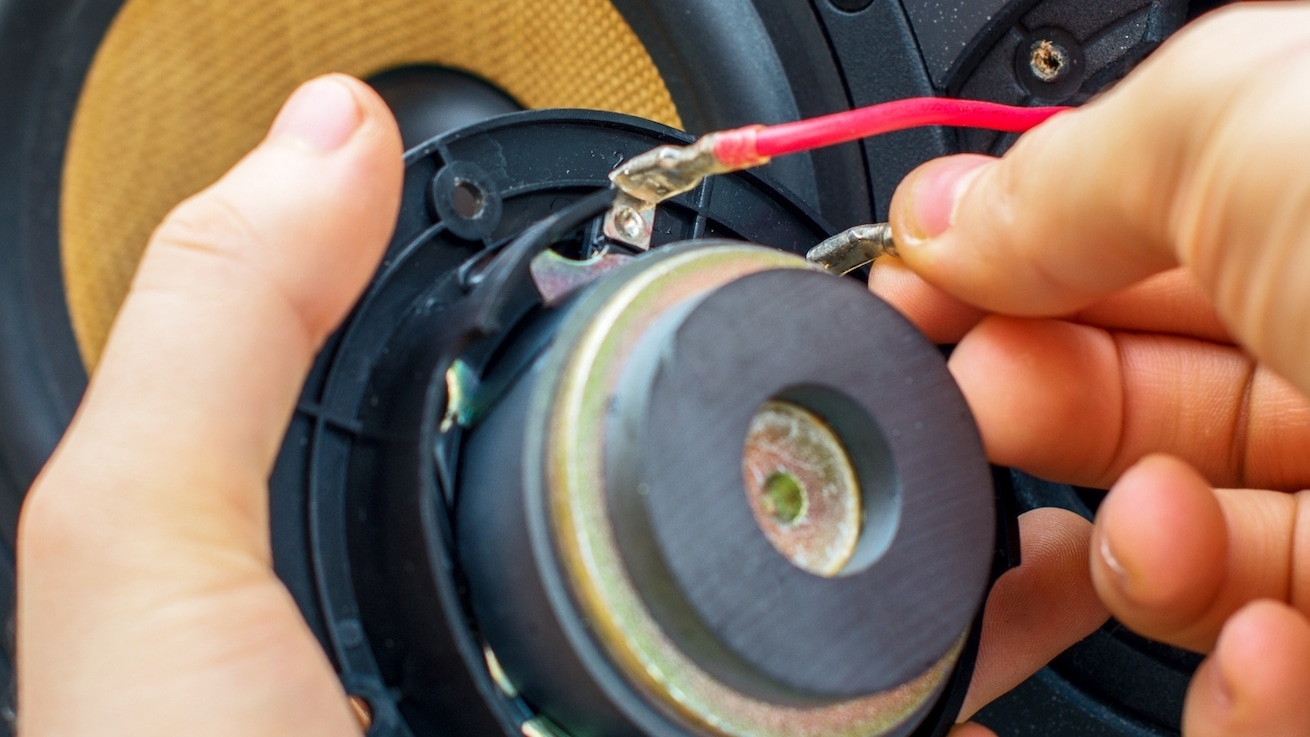
Beyond tackling the specific reasons for static sound in your speakers, fine-tuning your audio setup for clarity can heighten your auditory experience. Make sure that your amplifier is properly grounded to avoid any electrical issues that could lead to static sound.
Grounding your amplifier is a crucial step in setting up your audio system, as it helps prevent electrical interference. Verify that the audio channels on the amp do not have poor connections and that the power source is reliable and consistent.
By choosing the right connections, controlling volume levels, and addressing computer-based interference, you can ensure that your audio output is of the highest quality and free from static sound as well as static sound.
In the subsequent sections, we’ll look into different approaches to enhance your audio setup’s clarity. This includes topics like balanced vs unbalanced connections, controlling volume and selecting speakers, plus solutions for computer-based interference.
Balanced vs. Unbalanced Connections With The Speaker Wires
The type of connections you use in your audio system, including audio jacks, can have a significant impact on audio quality. Balanced connections, such as XLR and TRS cables, are generally preferred over unbalanced connections due to their ability to minimize distortion and interference.
When you opt for unbalanced connections, make sure not to cross unbalanced cables with power cables. This can lead to extra interference and a drop in audio quality. By choosing the appropriate connections for your audio device, you can greatly reduce the potential for static sound.
Volume Control and Speaker Selection
Keeping volume levels within suitable bounds is key in warding off distortion and static sound in your speaker system. If you enjoy listening to loud music or watching movies with powerful audio, investing in higher-quality speakers is essential.
The right speakers can handle high volumes without distortion or noise, ensuring an immersive listening experience. Some of the top-rated speakers for playing loud music without distortion or noise include:
- Klipsch The One II
- Tivoli Pal
- KEF LS50 Meta
- Elac B5.2
- Wharfedale Diamond 12.3
- Bose SoundLink Flex
- Anker Soundcore Motion Boom Plus
- Tribit StormBox Micro 2
- UE Wonderboom 2
By choosing the right speakers for your needs, you can enjoy your favorite tunes or movies at any volume without compromising sound quality.
Computer-Based Interference Solutions
When your audio setup is linked to a computer, it’s crucial to manage computer-based interference to maintain audio clarity. This becomes particularly important when you’re using multiple audio devices. If your computer speakers produce static noises, verify that the speaker cables are not touching other playback devices.
Solutions such as external audio interfaces, high-quality sound cards, and USB noise filters can help reduce interference and improve the overall audio quality of your audio device. Investing in the right audio equipment can make a significant difference in your listening experience.
External audio interfaces, high-quality sound cards, and USB noise filters all work by shielding internal components and creating a physical distance from the noisy parts of the computer, effectively blocking interference and ensuring a crisp, clear audio signal.
What causes white noise in speakers?
White noise in speakers is typically caused by gain being turned up too high, poor wiring, electromagnetic interferences, or faulty audio cables.
To reduce the noise, try adjusting your interface and software levels, changing the positions of the speakers, and checking for any damaged cables or plugs.
What do blown speakers sound like?
A blown speaker typically produces a distorted or crackling sound that does not go away even at lower volumes, or there may be no sound at all. Unpleasant buzzing or scratching noises are common signs of a blown speaker.
These noises can be quite disturbing, interrupting your favorite song or movie with unwanted sound distortions. They are often the result of a damaged voice coil, a key component in speakers that helps produce sound.
When the voice coil is damaged, it can no longer vibrate properly, causing the speaker to emit these unpleasant noises. In some cases, the speaker may also produce a faint humming sound or, in severe cases, may not produce any sound at all.
How can I prevent interference when using unbalanced connections?
To prevent interference when using unbalanced connections, avoid crossing them with power cables and keep all cables away from electrical noise sources.
Adjust the audio settings, ensuring that the levels are optimal for your listening environment. This involves checking the bass, treble, and mid-range settings, as well as the balance between the left and right speakers.
You may also want to consider any built-in sound enhancements or equalizer settings that your audio device may have. Remember, the goal is to achieve a clear, balanced sound that suits your personal preferences and the acoustics of your room.
Final Thoughts: Make Sure You Read This
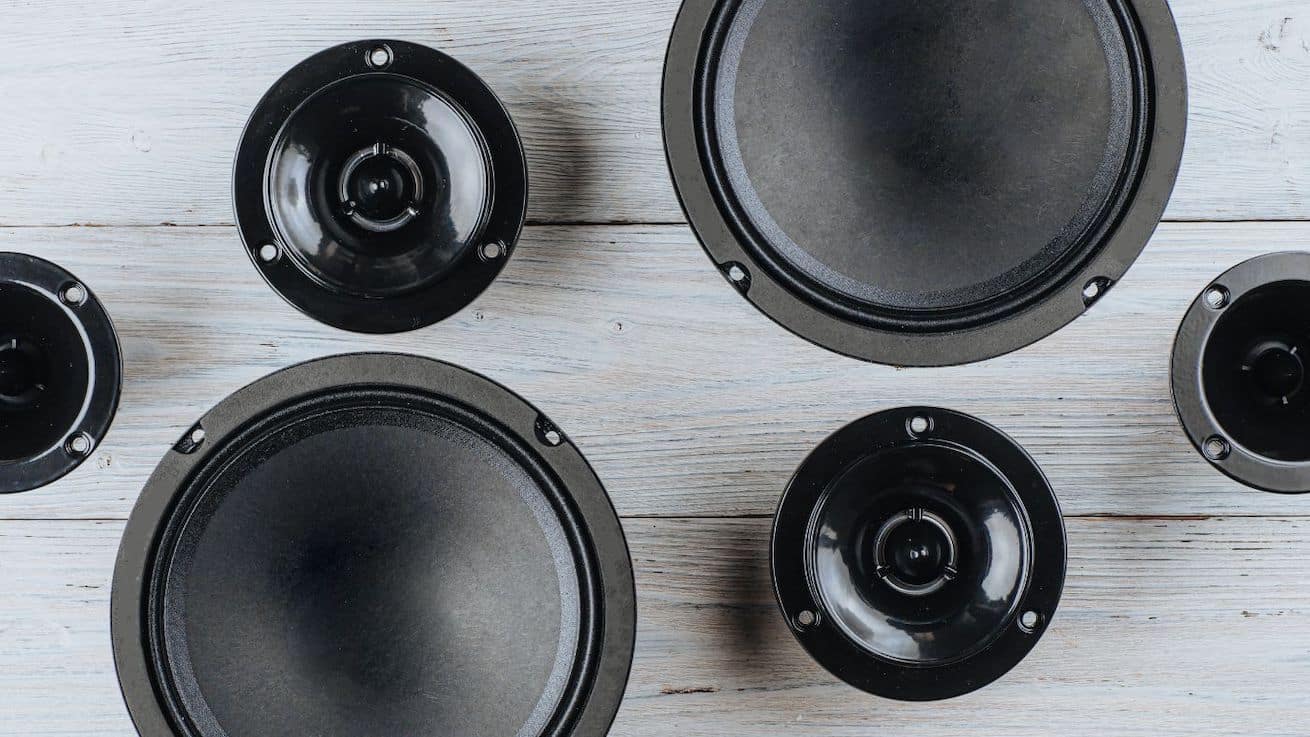
There may be instances where, regardless of your best efforts, static sound in your speakers continues. In such cases, it may be time to seek professional help for speaker repair or replacement. Signs that may point to the need for professional speaker repair include:
- Distortion
- Incomplete frequency response
- No sound or distorted sound
- Blown speaker with crackling or no sound
- Damaged or disconnected speakers
- When looking for a professional speaker repair service, ensure they possess:
- Experience with component-level repair
- Certification from reputable organizations such as the International Society of Certified Electronics Technicians (ISCET)
- Outstanding customer service and support
However, only attempt repairs if you are confident in your abilities, as improper repairs can potentially cause further damage or even pose safety risks.
Last Updated on: October 20, 2023

